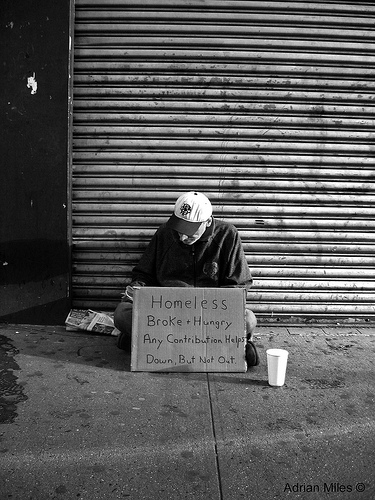Mayor Richard Berry says homelessness is one of the most difficult challenges he’s come across during his time in City Hall. "There are issues you look at as a mayor and you can say, OK. Here’s a problem. Here’s a linear solution." But homelessness, with its many dimensions and causes, is another story.For 10 months, the city has been working with providers and advocates to come up with a plan. And, in some ways, it’s a simple one. Heading Home will house the 75 most vulnerable homeless people in Albuquerque. "We have to do something," Berry says. "We have to start somewhere." "Most vulnerable" refers to the people in danger of dying because they are living on the streets, says Robin Dozier-Otten, director of Family and Community Services. Hundreds of volunteers will survey the city’s homeless population during the week of Jan. 30. This will also be an opportunity to conduct a "point-in-time" count, required every two years by the Department of Housing and Urban Development, Dozier-Otten explains. Two years ago, it was estimated that there were between 3,000 and 4,000 homeless people in the city.Volunteers will canvass the entire city, not just one area. And the 75 individuals or families chosen will be housed across Albuquerque, as well. Jeremy Reynalds, CEO of emergency shelter Joy Junction, criticizes the plan on his Facebook blog. He says it sounds like a "roundup," a way to clean up Downtown Albuquerque and sweep the homeless into "other low-income areas of the city." Berry says if this were about Downtown, he would say so. "The idea that this is somehow a conspiracy, frankly, doesn’t fly." The program wasn’t developed by the Mayor’s Office, he points out. Instead, he says, the people that are experts on Albuquerque’s homeless population crafted Heading Home.There is no sobriety requirement for participants because the program is based on the housing-first principal, explains Lisa Huval, policy and advocacy director for the New Mexico Coalition to End Homelessness. "Folks don’t have to earn their housing, but they have to be good tenants," she says. Local nonprofits have been enlisted to case-manage participants, and substance abuse recovery help will be available.Evidence from other cities shows that chronically homeless people do well in the housing-first model, she says, "and that’s true for people who are not usually successful in traditional programs." Even though they’re not required to seek treatment, they often do, she adds. The program costs about $500,000, and part of that funding is coming from Veterans Affairs. Berry expects Heading Home to save the city money with a decrease in visits to emergency rooms, hospitals and jails, as well as fewer emergency calls that require police, the Fire Department and an ambulance to show up. Each rescue response costs about $180, and there were 3,650 “down-and-out calls” last year, according to a news release. In 2010, those calls cost taxpayers about $644,000. "In the end, if we can show these individuals have less need for services over time," Berry says, "well then I can look at that and say, We positively impacted their outcome and the cost of homelessness, as well."
The city is seeking hundreds of volunteers for a variety of Heading Home tasks. People can conduct surveys of the city's homeless, gather furniture, enter data and more. Go to abqheadinghome.org or call 344-2323.





